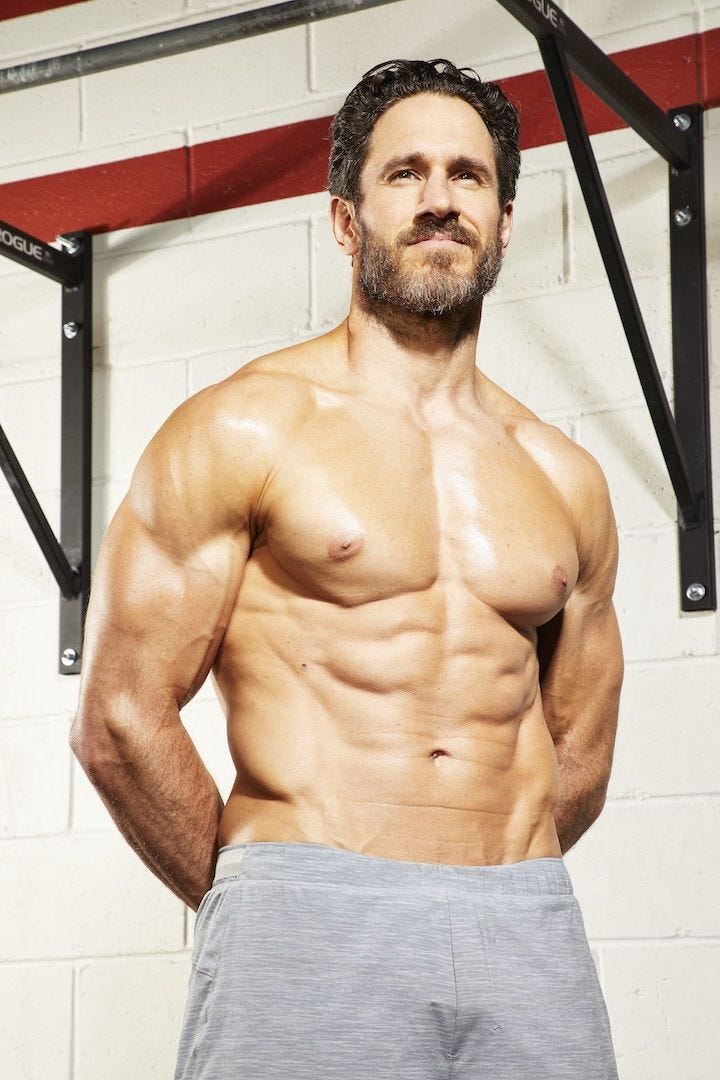
Almost everyone has one arm or leg that’s weaker than the other one. This imbalance could be the kryptonite that prevents you from getting the superhero body you want, as it can throw off the aesthetics of your physique—and, in the worst cases, set you up for injury. The fix? Unilateral training. That is, working one side at a time.
“There’s almost no sport that you perform off of two legs,” says Don Saladino, creator of the Men’s Health Superhero Shred program, “yet most of us train on two legs all the time.”
Whether it’s rec league softball, pick-up basketball with your buddies, or punching a heavy bag in your garage, most of your power and agility will rely on your ability to stabilize one leg and arm at a time. “So if we’re doing that in life, we should do it in the gym,” says Saladino.
Unilateral training will not only expose which side is weak. The protocol will help you to isolate the disparity to bring it back into balance while improving your flexibility to boot. Muscles get tight when your body senses that you can’t stabilize yourself when using one arm or one leg. This is a defense mechanism that actually works against you—but the more you train unilaterally, the more stable you’ll get, and the greater the range of motion you’ll be able to access.
Saladino offers the following seven exercises to start re-balancing your body. Perform 3–4 sets of 8 to 12 reps for each exercise. Work them into your existing workouts wherever you deem appropriate. Complete all the prescribed reps on one side and then repeat on the opposite side.

Want to check out this workout, and all of Saladino’s other superhero-sculpting routines? You’ll need Superhero Shred. You can order the physical version of the program, or get it as part of our new All Out Studio streaming video on demand platform, available on iOS and Android.
1. Half-Bench Single-Arm Press
Lie back on a bench with a dumbbell in your right hand, as you would to perform a normal dumbbell bench press. Scoot your body over to the right so the bench only supports half of your torso. You’ll have to brace your core hard to stay stable on the bench.
Press the weight up from chest level until your arm is locked out. You can extend your left arm while you press to help you maintain balance.
2. Elevated Plank
Hold a dumbbell in your right hand and get into a pushup position with your left hand supported on a bench. Brace your core.
Row the dumbbell to your hip without twisting your torso in either direction.
3. Half-Kneeling Shoulder Press
Hold a dumbbell in your left hand at shoulder level and get into a lunge with your right leg in front. Lower your body until your left knee rests on the floor.
Press the weight overhead, avoiding any twisting or bending in your torso. Squeeze your left glutes to help you keep balance.
4. Overhead Split Squat
Hold a dumbbell in your left hand at shoulder level and step forward with your right leg. Press the weight overhead.
Balance the dumbbell as you lower your body until your left knee nearly touches the floor, and then come back up.
5. Single-Leg RDL
Stand on your right leg while holding a dumbbell in your left hand. Draw your shoulder blades back together and downward (think: proud chest).
Begin bending your hips back as far as you can, allowing your right knee to bend as needed. Your left leg will extend behind you. Go as low as you can without losing the arch in your lower back. Keep a long spine from your head to your tailbone.
Squeeze your glutes as you extend your hips to come back up to standing.
6. Tall-Kneeling Dumbbell Curl
Kneel on the floor with a dumbbell in your right hand. Keep your head, spine, and pelvis in one long line, and brace your core. Maintain this position as you curl the weight until your biceps are fully contracted.
7. Half Rack, Half Overhead Carry
Hold a kettlebell or dumbbell in each hand. Press the right-hand weight overhead and hold the other one at shoulder level (the rack position).
Stand tall and brace your core. Maintain this position as you walk forward. Go as far as you can, or walk for 30 seconds. Repeat for 3 to 4 sets.
Source: Read Full Article